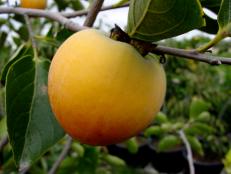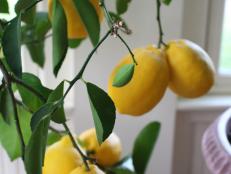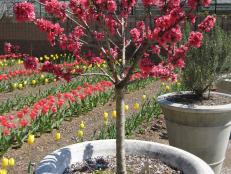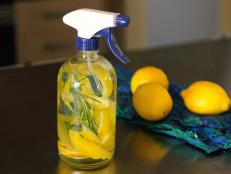Grow Your Own Lemons
Meyer lemon trees yield plump, fragrant, juicy lemons in pots or your own backyard.

White Flower Farm

Lemons make our mouths pucker and kick our salivary glands into overdrive, but many dishes just wouldn’t be the same without their sharp flavor. They season our foods much like salt and spices, and their citric acid tenderizes meats and marinates vegetables and berries.
Lemons trees aren’t hard to grow in your kitchen garden, but they won’t thrive unless you live where the winters are mild (hardiness zones 9 to 11), These subtropical plants are killed or damaged once the temperatures dip into the 20s.
Even if you can’t grow lemons in your backyards, you can grow them in pots. One of the best container choices is the fragrant, evergreen Meyer lemon. It typically bears in 1 to 2 years after planting, and the trees are self-pollinating, so you don’t have to plant more than one.
Because they contain less acid than their sour relatives, and they’ve been bred with milder-tasting mandarin oranges, Meyer lemons taste relatively sweet. Their thinner skins make them great for cooking—and explains why you can’t always find them on supermarket shelves. Those thin skins also make them tricky to ship.
Meyer lemon trees can reach 8 to 10 feet tall in your garden and have a naturally shrubby shape. Look for a dwarf variety if you grow your tree in a pot and move it indoors for the winter. Dwarf Meyer lemons can reach 5 to 6 feet tall.
Start with a large pot with drainage holes, and fill it with good quality potting soil. If the tree’s roots are tangled, gently loosen them. Put the tree in the pot and backfill with soil. Water thoroughly and make sure the excess drains away. Meyer lemons dislike soggy soil and will die if overwatered.
When your container-grown tree is outdoors, give it full sun for at least 6 to 8 hours a day. If you live in a very hot, sunny climate, it may need morning sun and afternoon shade. Bring the pot indoors when the temperatures start dropping into the 50s. Keep the tree in a sunny window, but avoid letting direct sun burn the leaves. If you don’t have bright light, supplement with grow lights.
When it’s actively growing, or from spring to early fall, feed your tree with high nitrogen fertilizer or a slow-release, all purpose fertilizer. Stop fertilizing from late fall to winter. Read the label on your product to see how much to apply.
Your home is likely to be drier indoors when the heat is running, so mist the tree as needed to raise the humidity.
If your tree blooms outdoors, wind and insects will take care of pollination. But Meyer lemons can bloom throughout the year, so if the flowers open while it’s inside, you may need to help with pollination. Touch a cotton swab or small paintbrush to the pollen (the yellow powder) in the flowers. Then rub the pollen on the stigmas, the female reproductive parts (they look like tiny stems in the center of the flowers).
For large lemons, reduce the developing fruits, when they’re about the size of marbles, to one or two per cluster. Don’t worry if your Meyer lemon drops some of its fruits and blooms; this is normal for citrus trees.
The fruits are ripe when they turn egg-yolk yellow and have a little give when gently squeezed. Cut them from the tree with a sharp knife to avoid accidentally breaking a branch.
Troubleshooting Your Meyer Lemon
• If your tree isn’t producing, it may need more sun.
• Yellowing leaves can result from overwatering. If the leaves turn yellow from the tip to the base, the tree may need nitrogen. Use a balanced fertilizer for citrus trees to make sure it's getting all the necessary nutrients.
• If spider mites attack, spray both sides of the leaves with a few drops of mild dishwashing liquid mixed in water. If the pests persist, try insecticidal oil labeled for use on Meyer lemons. Fortunately, most improved Meyer lemon varieties are pretty pest-resistant.
Pruning a Meyer Lemon Tree
• Use sharp, clean cutting tools and prune in late winter. Remove any shoots growing from the roots or below the graft union (the spot where the tree was grafted to the dwarf rootstock).
• Prune any shoots growing straight up out of the tree.
• Prune out dead or damaged wood and branches hanging toward the ground. Also remove branches that rub against or cross each other. Cut back diseased wood until you’re back to healthy tissue.
• It’s fine to prune overly long branches and work your way around the tree to give it a rounded shape.
• If desired, remove the fruits on your tree for the first two years after planting, to help it become established and grow vigorously.













































